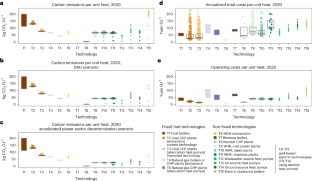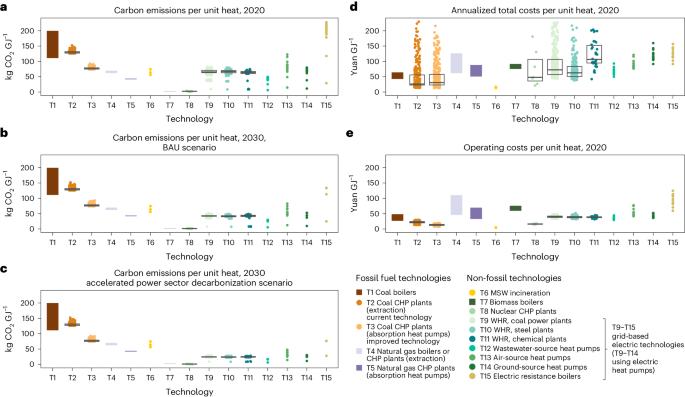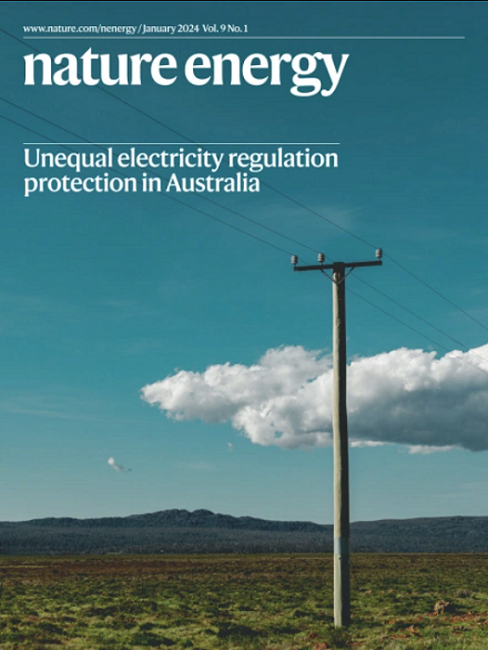中国城市区域供热系统热源多样化将降低碳锁定风险
IF 49.7
1区 材料科学
Q1 ENERGY & FUELS
引用次数: 0
摘要
自 2017 年以来,中国的清洁供暖政策显著改善了空气质量。然而,非化石能源在中国城市区域供热系统中的比例仍然很低,许多新的燃煤热电联产厂正在建设中。中国要想在 2030 年达到碳排放峰值,并在 2060 年实现碳中和,就必须对区域供热技术做出战略性选择。在此,我们发现,以新型和改进型燃煤热电联产电厂取代污染严重的燃煤技术将导致大量碳锁定,并阻碍相关燃煤发电的退役。扩大使用工业废热和空气/地面源热泵可以避免新建热电联产厂,并在 2020 年至 2030 年间减少 26% 的碳排放。我们的研究结果表明了政府最近提出的区域供热去碳化建议的重要性。本文章由计算机程序翻译,如有差异,请以英文原文为准。


Diversifying heat sources in China’s urban district heating systems will reduce risk of carbon lock-in
China’s clean heating policy since 2017 has notably improved air quality. However, the share of non-fossil sources in China’s urban district heating systems remain low, and many new coal-fired combined heat and power plants are being built. Strategic choices for district heating technologies are necessary for China to reach peak carbon emissions by 2030 and achieve carbon neutrality by 2060. Here we find that replacing polluting coal technologies with new and improved coal-fired combined heat and power plants will lead to substantial carbon lock-in and hinder decommissioning of associated coal-fired electricity generation. Expanding the use of industrial waste heat and air/ground-source heat pumps can avoid the need for new combined heat and power construction and reduce carbon emissions by 26% from 2020 to 2030. Our findings indicate the importance of the government’s recent proposals to decarbonize district heating. China’s continuing reliance on coal in district heating risks considerable carbon lock-in and hinders decommissioning of coal-fired electricity generation. This work outlines how the government can achieve its proposal to decarbonize district heating.
求助全文
通过发布文献求助,成功后即可免费获取论文全文。
去求助
来源期刊

Nature Energy
Energy-Energy Engineering and Power Technology
CiteScore
75.10
自引率
1.10%
发文量
193
期刊介绍:
Nature Energy is a monthly, online-only journal committed to showcasing the most impactful research on energy, covering everything from its generation and distribution to the societal implications of energy technologies and policies.
With a focus on exploring all facets of the ongoing energy discourse, Nature Energy delves into topics such as energy generation, storage, distribution, management, and the societal impacts of energy technologies and policies. Emphasizing studies that push the boundaries of knowledge and contribute to the development of next-generation solutions, the journal serves as a platform for the exchange of ideas among stakeholders at the forefront of the energy sector.
Maintaining the hallmark standards of the Nature brand, Nature Energy boasts a dedicated team of professional editors, a rigorous peer-review process, meticulous copy-editing and production, rapid publication times, and editorial independence.
In addition to original research articles, Nature Energy also publishes a range of content types, including Comments, Perspectives, Reviews, News & Views, Features, and Correspondence, covering a diverse array of disciplines relevant to the field of energy.
 求助内容:
求助内容: 应助结果提醒方式:
应助结果提醒方式:


